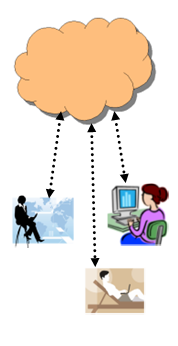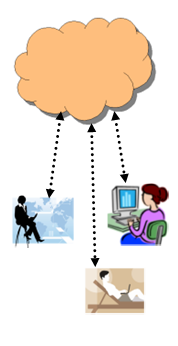Add X3D on Your Webpage
Submitted by Leonard Daly on Mon, 01/19/2015 - 15:39 Getting X3D to display on your webpage is very simple. The simpliest example can be accomplished in three easy steps. These are summarized as
Getting X3D to display on your webpage is very simple. The simpliest example can be accomplished in three easy steps. These are summarized as
 Getting X3D to display on your webpage is very simple. The simpliest example can be accomplished in three easy steps. These are summarized as
Getting X3D to display on your webpage is very simple. The simpliest example can be accomplished in three easy steps. These are summarized as
Net Neutrality is showing up as one of the top stories shortly after the 2014 elections. It is not an easy topic to understand, especially with all of the claims and counter-claims flying around the Internet. Many of the statements are made by people who have no idea what is involved but are taking their position purely for political or personal financial reasosns. This post is an attempt to explain in relatively simple terms what is involved in Net Neutrality by using familiar analogies.
In a previous post I showed how a scene could be displayed in a browser and viewed stereoscopicly with Google Cardboard. This post describes a more efficient means of creating the display. In both cases, the browser screen is split in half with slightly different viewpoints so the eyes/brain combination views the result with depth.
This post expands on the presentation titled "Driving the Evolution of the 3D Web". The code is include plus active links to the demos and examples.
The groundwork for the display of 3D graphics and 3D stereographics using the web has been laid. Head-mounted displays such as Google Cardboard and Oculus Rift now make it possible to view stereoscopic scenes in your home or out on the street.
This is a short follow-on to the Passwords and Hacking series.
The Internet worm "Morto A" continues to infect computers. It uses Microsoft's Remote Desktop to spread. It attempts to gain access to your computer using Remote Desktop's protocol. It will succeed if your password is one of 37 simple passwords listed below.
Solution: Don't use a simple password. See Passwords and Hacking for various means to create complex passwords.
Microsoft has confirmed that Internet Explorer (all versions) has a bug that allows the browser to run software as you on your computer. Making it happen is rather technical, but it can happen when you go to a "specially crafted"1 web site that downloads the code into the browser than causes the browser to execute the code as if it were part of the browser's regular code. The attacks "in the wild"2 use Flash on IE V9, 10, and 11.
 Notes for Pages 1 & 2 are available at Cloud Computing Opportunities. The page references are for the attachment to this post.
Notes for Pages 1 & 2 are available at Cloud Computing Opportunities. The page references are for the attachment to this post.
 Cloud computing offers small and medium businesses (SMB) many opportunities to reduce computing costs and improve their internal computing operations. The attached file contains the slides from a presentation I made to a group of SMB executives. The discussion below is my slide-by-slide notes.
Cloud computing offers small and medium businesses (SMB) many opportunities to reduce computing costs and improve their internal computing operations. The attached file contains the slides from a presentation I made to a group of SMB executives. The discussion below is my slide-by-slide notes.
This is work done in Drupal V6. Drupal is an Open-Source Content Management System. More information is available at http://drupal.org.
Copyright © 2025, Daly Realism
Theme by Zymphonies
